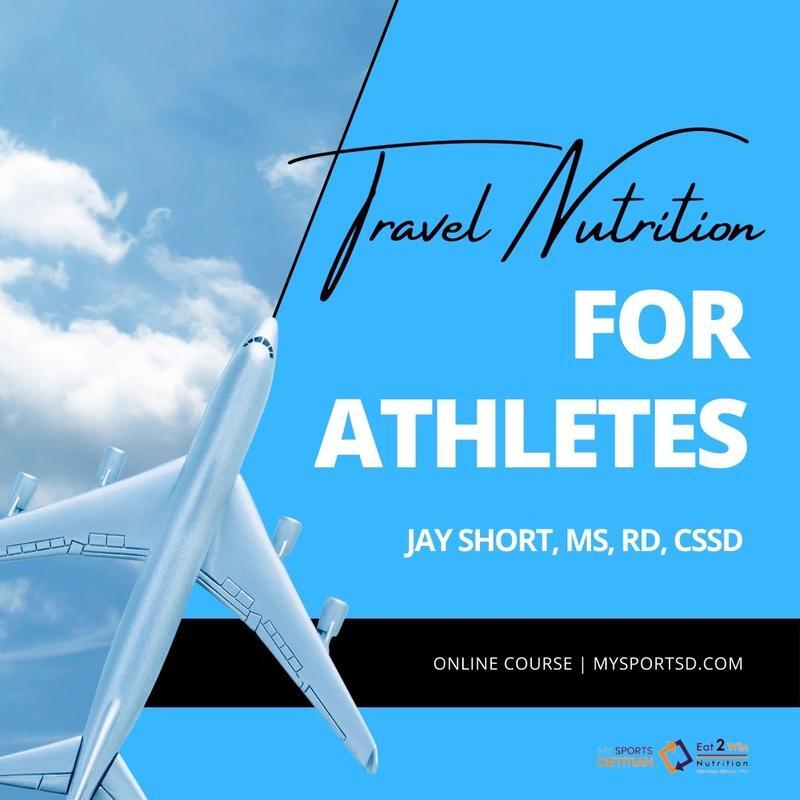
Ensure your athletes stay fueled and hydrated during travel. Learn how to plan nutrition and hydration strategies to maintain energy levels, prevent illness, and maximize athletic performance while on the move.
For athletes, travel is a necessary part of the competitive schedule, but it is also a silent performance killer. Long flights, cramped bus rides, irregular meal times, and unfamiliar food sources all compound the effects of fatigue and stress. The result? Depleted energy stores, increased risk of illness, and compromised muscle recovery.
Optimizing travel nutrition and hydration isn't an afterthought—it's a critical component of a winning strategy. This guide provides actionable steps for athletes and support staff to proactively plan meals, pack smart snacks, and maintain hydration to ensure peak performance, no matter the destination.
The Non-Negotiables: Planning is Your Best Defense
The single most effective strategy for athlete travel nutrition is meticulous planning. Don't leave your fuel strategy to chance.
Pre-Travel Planning Checklist
A few days before departure, address these key areas:
Review the Itinerary: Note all travel legs (bus, flight, layovers) and competition times. Use this to map out exactly when meals and recovery snacks must occur.
Research the Destination:
Accommodation: Does the hotel offer a breakfast buffet? Is there a mini-fridge? A microwave? Self-catering options are a huge advantage.
Local Food: Identify nearby grocery stores and restaurants with reliable, performance-friendly options (e.g., grilled protein, rice, pasta).
Consult on Allergies/Needs: If traveling with a team, ensure all dietary restrictions (allergies, intolerances, special religious/ethical diets) are communicated to organizers and catering staff.
Boost Immunity: Stress and travel increase the risk of illness. Increase intake of Vitamin C, Zinc, and consider a quality probiotic a week or two before travel to support gut health.
Hydration Strategies: Combating Travel Dehydration
Travel environments—especially pressurized airplane cabins and air-conditioned vehicles—are inherently dehydrating. Even a mild 2% drop in hydration can significantly reduce athletic performance.
Key Hydration Tactics for Athletes on the Go
Carry-On Water Bottle: Always travel with a large, reusable water bottle. Refill immediately after going through airport security.
The Sip Strategy: Avoid drinking large volumes at once. Sip frequently throughout the journey to allow your body to absorb the fluid more effectively.
Electrolytes are Crucial: Use electrolyte tablets or powder (ideally a third-party tested/NSF Certified for Sport product) to add to your water. This helps replace sodium lost through sweat and counteracts the dehydrating effects of travel.
Limit Dehydrating Drinks: Minimize or avoid excessive intake of coffee, tea, and alcohol, as these are diuretics that increase fluid loss.
Post-Travel Recovery: Upon arrival, immediately focus on replenishing fluids, aiming to consume $1.25-1.5$ Liters of fluid for every kilogram of body weight lost (if weighed before and after the flight/trip).
Smart Snacking: Athlete-Approved Travel Food
The biggest challenge is often the unpredictable quality and availability of food. Packing your own "Fuel Bag" is a necessity. Focus on non-perishable, nutrient-dense options.
Top Portable Snacks to Pack
| Macronutrient Focus | Snack Examples (TSA-Friendly) | Performance Benefit |
| Carbohydrates | Dried fruit (raisins, dates), pre-portioned bags of dry cereal, whole-grain crackers, instant oatmeal cups. | Quick and sustained energy for training and competition. |
| Protein | Protein powder in a shaker bottle, single-serving tuna or salmon packets, shelf-stable beef/turkey jerky, protein bars. | Muscle protection and satiety on long travel days. |
| Healthy Fats | Small bags of unsalted nuts and seeds, single-serving nut butter packets. | High energy density to manage calorie needs and reduce hunger. |
| Combination | Trail mix (carbs/fats), pre-packaged whole-wheat peanut butter crackers. | Balanced fuel for longer gaps between meals. |
Destination Strategies: Securing Performance Meals
Once you've arrived, your focus shifts to finding reliable, clean, and appropriately portioned meals that match your performance needs.
Navigating Hotels, Buffets, and Restaurants
Buffet Strategy: Approach buffets strategically. Start with lean protein (eggs, chicken, fish) and complex carbohydrates (rice, potatoes, whole-grain bread). Load up on familiar, well-cooked vegetables. Avoid high-fat, deep-fried, or heavily sauced items.
Safety First (International Travel): Be extremely cautious with hygiene. Stick to bottled water (including for brushing teeth), well-cooked food served hot, and peelable fruits (e.g., bananas, oranges) to prevent traveler’s diarrhea. Avoid ice, tap water, and raw salads unless you can guarantee the source.
Order Smartly: When eating out, request modifications: "Grilled, not fried," "sauce on the side," and "extra rice/potato instead of fries." Don't be shy about asking for performance-friendly fuel.
Conclusion: Consistent Fuel, Consistent Performance
Travel should never be an excuse for poor nutrition. By implementing a proactive plan that addresses hydration, smart packing, and destination-specific challenges, athletes can significantly mitigate travel stress and maintain the consistency required for elite-level performance. Treat your travel nutrition plan with the same dedication as your training plan, and you'll arrive ready to compete at your absolute best.
